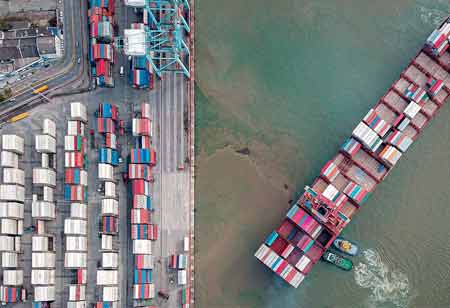THANK YOU FOR SUBSCRIBING
THANK YOU FOR SUBSCRIBING

By
Logistics Transportation Review | Tuesday, July 29, 2025
Stay ahead of the industry with exclusive feature stories on the top companies, expert insights and the latest news delivered straight to your inbox. Subscribe today.
FREMONT, CA: The Asia-Pacific (APAC) region is experiencing rapid economic growth, which, unfortunately, comes with increased consumption and waste generation. In response, businesses and governments increasingly focus on reverse logistics and circular economy principles to optimize returns, recycling, and reuse of materials.
Understanding Reverse Logistics and the Circular Economy
Reverse logistics plays a pivotal role in modern supply chains by facilitating the movement of goods from their final destination for returns, repairs, recycling, or disposal. In the APAC region, the rapid expansion of e-commerce has significantly increased product returns, making efficient reverse logistics essential for businesses. At the same time, the circular economy aims to maximize resource utilization by extending product life cycles and ensuring materials are recovered and regenerated. Reverse logistics is the backbone of this system, providing the necessary infrastructure to collect and process materials for reuse and recycling.
Key Trends Shaping Reverse Logistics in APAC
Several key trends and optimizations are shaping the reverse logistics landscape in APAC. The booming e-commerce sector has prompted companies to invest in automated return portals, real-time tracking systems, and data analytics to streamline processes and minimize return rates. Meanwhile, e-waste management has become a critical focus, with governments and businesses establishing collection points, enforcing recycling regulations, and preventing illegal disposal. The fashion industry also addresses sustainability challenges by implementing take-back programs, investing in textile recycling technologies, and designing products for greater durability and recyclability.
The Role of Packaging Optimization in Reverse Logistics
Packaging optimization is another major priority, with businesses reducing waste by adopting sustainable materials, implementing reusable packaging systems, and optimizing packaging design to minimize resource consumption. Government policies further support these efforts through Extended Producer Responsibility (EPR) schemes, waste management regulations, and incentives for recycling and reuse. Technological advancements, including IoT for tracking materials, AI for optimizing logistics, and blockchain for supply chain transparency, are driving further improvements in reverse logistics and circular economy initiatives. Together, these developments are transforming APAC’s sustainability approach, enhancing economic efficiency and environmental responsibility.
Looking ahead, fostering collaboration among businesses, governments, and consumers is essential to advancing the circular economy in the APAC region. Continued investment in technology and innovation will be pivotal in driving sustainable solutions. Increasing consumer awareness and encouraging responsible consumption patterns will be critical to ensuring long-term success.
The APAC region is making significant strides in adopting reverse logistics and circular economy principles. As awareness and technology continue to improve, the area is poised to become a leader in sustainable resource management.
I agree We use cookies on this website to enhance your user experience. By clicking any link on this page you are giving your consent for us to set cookies. More info





